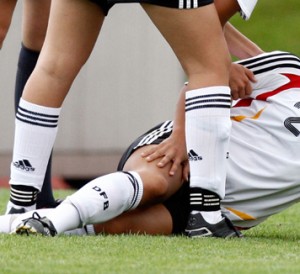 For the past few decades, the number of females participating in sports has increased. In addition, the incidence of female athletes sustaining an anterior cruciate ligament (ACL) tear has also considerably grown. Studies have indicated that ACL injuries are up to 2-8X more common in females than males. The aftermath of an ACL tear is significant physically, mentally, and financially. The average rehabilitation time following an ACL reconstruction is about 9 months.
For the past few decades, the number of females participating in sports has increased. In addition, the incidence of female athletes sustaining an anterior cruciate ligament (ACL) tear has also considerably grown. Studies have indicated that ACL injuries are up to 2-8X more common in females than males. The aftermath of an ACL tear is significant physically, mentally, and financially. The average rehabilitation time following an ACL reconstruction is about 9 months.
Considering that most ACL injuries (approx. 70%) are non-contact in nature, females have an opportunity to reduce their risk. Several risk factors have been identified with regard to ACL injury in females. Anatomical differences between females and males including: pelvis width, larger Q-angle, and smaller intercondylar notch may cause increased stress on the ACL during dynamic movements (e.g. – jumping/landing, cutting, pivoting). Hormonal differences have also been hypothesized as a factor in females. Increased levels of estrogen may affect the mechanical properties of the ACL. Biomechanical/neuromuscular differences between females and males is the area that best presents a way to decrease the chance of ACL injury.
It has been shown that females have different muscle firing sequences in the legs during sports activity. Females tend to land and plant their feet with less knee flexion relying more on their quadriceps for control. This places a large load on the ACL and increases the risk of a tear. Having adequate hamstring strength is very important for all female athletes. It is recommended that the ratio of hamstring to quadriceps strength be 60-80%. Also, athletes who have weak core strength will tend to have less upper body control and stability which makes them more likely to sustain an injury. Neuromuscular training programs have been shown to lower the risk of ACL injury in females. These types of programs help to improve muscular control and stability of the joints in order to place less stress on ligaments.
If you have questions or would like to learn more about reducing your risk of an ACL injury, contact the therapy experts at ProActive Physical Therapy and Sports Medicine. Stay healthy, stay in the game!

